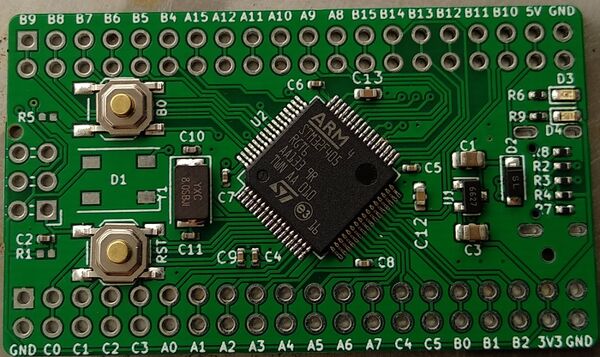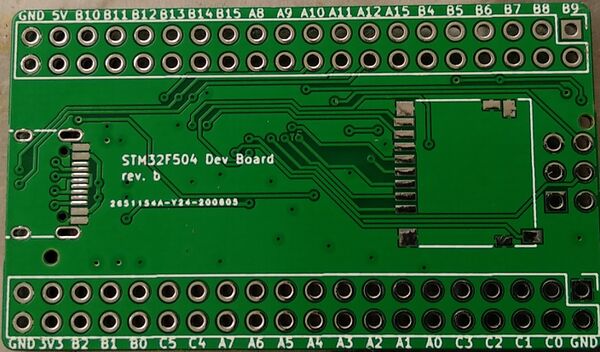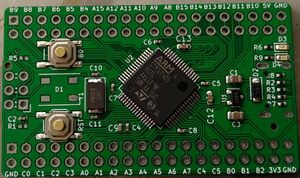Difference between revisions of "Stm32Dev - rev. b"
Jump to navigation
Jump to search
(→PCB) |
|||
| Line 1: | Line 1: | ||
| − | [[Category:STM32]][[Category:STM32 Development Board]][[Category:STM32F405]][[Category:STM32 Hardware Development]]{{metadesc|Own design STM32 development board}} | + | [[Category:STM32]][[Category:STM32 Development Board]][[Category:STM32F405]][[Category:STM32 Hardware Development]]{{metadesc|Own design STM32 development board with gd32f405 mcu}} |
[[File:Stm32Dev rev. b - top side unpopulated.jpg|thumb|STM32Dev rev. b]] | [[File:Stm32Dev rev. b - top side unpopulated.jpg|thumb|STM32Dev rev. b]] | ||
When designing the [[Stm32Dev - first version]] a number of mistakes was made. This lead naturally to the development of [[Stm32Dev - rev. b]]. | When designing the [[Stm32Dev - first version]] a number of mistakes was made. This lead naturally to the development of [[Stm32Dev - rev. b]]. | ||
| − | |||
| − | |||
| − | |||
| − | |||
| − | |||
| − | |||
| − | |||
| − | |||
| − | |||
| − | |||
| − | |||
| − | |||
| − | |||
| − | |||
| − | |||
| − | |||
| − | |||
| − | |||
| − | |||
| − | |||
| − | |||
| − | |||
| − | |||
| − | |||
| − | |||
| − | |||
| − | |||
| − | |||
| − | |||
| − | |||
| − | |||
| − | |||
| − | |||
| − | |||
| − | |||
| − | |||
| − | |||
| − | |||
== PCB == | == PCB == | ||
Revision as of 03:49, 11 May 2021
When designing the Stm32Dev - first version a number of mistakes was made. This lead naturally to the development of Stm32Dev - rev. b.
PCB
Based on the above production files, a run of 5 boards were ordered at JLCPCB. They were received like this (and yes - we are aware of the silkscreen typo):

|

|
The USB-C connector, the SD, the ws2812 and all the headers have not been mounted by jlcpcb.
